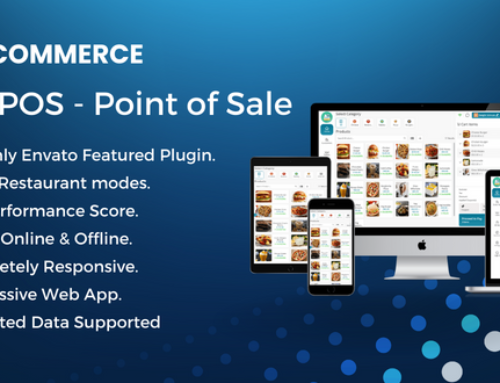It is a PHP-based pharmaceutical management system. The theme is a cost-effective way to expand your company and keep track of your store’s data, including inventory, purchases, billings, reports, and buy essays, among other things. It makes it simple to access and maintain all of your pharmacy’s data, including your medications, employees, customers, POS/Bill, invoicing, buy, stock adjustment, accounting, costs, attendance, payroll, attendance, reports, and users. You can create many administrative positions. One adaptable application may be used to manage everything.
Features:
- Inventory/Medicine Management- Keeping track of drugs that don’t move much and have a short shelf life is part of inventory management. Keep your customers by giving them automatic reminders when they are almost out of their medicine.
- Point of Sales/Billing (POS)- Point of Sale (or POS) The process of paying is when your customer pays for the goods or services they bought at your store. A point of sale (POS) is a place where transactions occur. This could be your retail store or your shop’s checkout stands.
- Invoice Management- Invoice management is when a business gets an invoice from a vendor, checks to see if it is real, pays the seller, and keeps track of the payment. Good handling of invoices and payments to vendors can have just as much of an effect on a business’s bottom line as its sales.
- Purchase Management (Batch Wise)- Purchase management is the process of making sure that the company gets the things and services it needs from sellers and partners. It is often an important part of how a business works and a chance to make the business more efficient and profitable.
- Stock adjustment- A stock adjustment is an addition to or subtraction from the stock so that the real amount on hand matches the amount shown in the system. This is simply a change to the records so that they match the physical count.
- Live Stock, Expired Stock, Upcoming Expire Stock month-wise- It also keeps track of live stock, stock that has already expired, and stock that will expire soon.
- Update Stock manually- This app makes it easy to directly update stock.
- Expense Management- Employees can handle costs in a number of ways, from mobile apps that let them scan receipts to business software that covers travel policies, approvals, expense tracking, and travel cost management.
- Payroll/Staff Salary Management- The payroll management method is how a company handles the money information of its employees. Information about the employee’s income, rewards, bonuses, deductions, and net pay would be provided.
- Send Single/Bulk Email- This app will help you send single or bulk emails.
- Customer Management- Customer management is a set of practices, strategies, and tools businesses use to handle and study customer interactions and data throughout a customer’s lifecycle.
- Predefined Taxes, Payment Methods, Expense types, Invoice items etc- It also takes care of predefined taxes, payment methods, expense types, invoice items, etc
- Noticeboard- A bulletin board is where public messages can be posted, such as ads for things needed or for sale, notices of events, or pieces of information.
- Attendance Management- Attendance Management keeps track of how many hours your employees work. It’s how you track how long your workers work and how long they’re off. Management of attendance can be done on paper, in spreadsheets, by punching time cards, or by using online tools for your business.
- Advanced dashboard for admin role- The Administrator Dashboard gives State managers and people who look at reports a single view of how the organization makes and uses content.
- Report Management- Measure and keep an eye on specific measures and KPIs for success. Find out where a goal is at and how well it is doing so you can decide what to do next. Set up goals and standards.
- Date-to-date reports generate- It makes the reports for each day.
- Bill report- The Bill Data report shows what is in the bill database at any given time. With the Bill Data report tool, you can make custom reports that show all of your bills.
- Invoice Report- Invoice reports are master-detail reports that print when certain conditions are met.
- Purchase Report- You may gain insight into the purchases made for various goods in your inventory by consulting a Product purchase report. This report will primarily focus on the amount purchased as well as the total cost expended to acquire that quantity over a specific period range.
- Expense report- A form that is used to keep tabs on the money that is spent on a business is called an expense report. Employees are the ones who often fill it out, and their goal is to itemize the costs that they incurred so that they may be reimbursed.
- Sales Report- A sales report is a compilation of measurements, quantitative data, and qualitative inputs that helps to analyze sales performance within a team, area, division, or company. Sales reports can be broken down into many categories, such as monthly, quarterly, or annual.
- All Income & Expenses Statistics- It offers comprehensive statistics on both income and expenditures.
- Inventory Report- A retailer’s current stock is summarised in what is known as an inventory report. It condenses information such as how much stock you have, which goods are selling the quickest, category performance, and other data on the state and performance of inventory into a comprehensible manner.
- Out-of-Stock Report- It creates a report entitled “Out of Stock.”
- Multiple Admin User and Multiple User Role- It manages several administrative users and multiple user roles.
- Easy Settings like Timezone, Date format, Currency and Invoice settings- This application handles Easy Settings, such as the Timezone, Date Format, Currency, and Invoice settings.
- Theme Customization- The Theme Customization page gives site administrators the ability to make changes to a theme’s settings, color scheme, or widgets while simultaneously viewing a live preview of those modifications.
- Responsive Design- Responsive web design, often known as RWD, is an approach to web design that considers the variety of devices and screen sizes available. This allows the content to adjust automatically to fit the screen, regardless of whether it is being seen on a tablet, phone, television, or watch.
- Easy to Customize- It is simple to personalise.
- Fully Customisable- The Corporate plan does not restrict the level of customisation available. As a result, you have the ability to build many individualised themes. In addition, the UserGuiding branding will not be displayed on your content if you have either of these two subscriptions.
- Cross Browsers Compatible- The capacity of a website, web application, or HTML constructions to support a number of different web browsers is referred to as cross-browser support, which is also often referred to as cross-browser compatibility.
- HTML5 & CSS3 Optimized- If you have a solid understanding of HTML, you will be able to produce, display, and edit a wide variety of information for use on the World Wide Web. CSS3. CSS may be seen of as a “enhancement” to HTML since it provides users and developers with additional control over the presentation of web pages and their content.
- Clean & Simple- It is really easy, simple, and straightforward.








